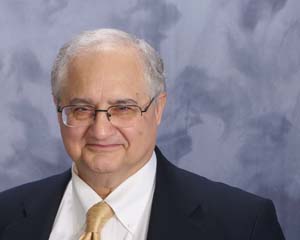Introduction to Distance Education: Conceptual Development
Founder and Editor, Distance-Educator.com
Distance education has been a way of learning for countless individuals for more than a hundred years (Moore & Kearsley, 2012). It is a general concept which has roots in adult education embracing independent study, self-directed
learning, as well as non-traditional and open and flexible education. In recent years, some distance education has also been referred to as eLearning particularly in corporate training arena when an instructor is absent and the learner is learning from the materials that are offered on the Internet primarily through the World Wide Web. In this series distance education includes eLearning and online learning as sub-categories of distance education.
Throughout the history of distance education, learning
at a distance has been made possible through the use of technology, starting with print and modern transportation, as in correspondence education, and later with electronic communication as in educational radio, instructional television, and web-based education.
Distance education has been a way of learning for countless individuals for more than a hundred years (Moore & Kearsley, 2012).
The contemporary study of distance education in the United States includes developments in the late 19th century when print and modern transportation made teaching and learning at a distance possible. The field of study also includes radio, television, telecommunication satellites, cable television and the Internet for teaching and learning as the 20th century evolved.
In a broad review of the field, influences of several other practices and formal fields can also be included going as far back as the early 17th century. These include:
- Informal apprenticeship programs that can be traced back to the 1600’s in the Colonial times.papers and
- Discussion forums, when Benjamin Franklin organized Junto—an informal discussion group—in Philadelphia in 1727.
- Self-improvement groups, such as the Lyceum and the Chautauqua movement in the 1800’s and various other adult, self-directed, continuing and extension programs that are now formalized in higher education institutions and other organizations. (Rasmussen, 1989).
Although Junto and Lyceum, for example, were conducted in-person, their formation was based on the principle of independent learning, which is one of the underpinning concept of contemporary distance education. The Chautauqua movement, however, expanded beyond its birth-place in upstate New York, and evolved into an early form of distance teaching and learning through correspondence.
 In this series, we will start a journey to introduce distance education from correspondence education and will describe the role of radio, television, telecommunication satellites, cable television, and wireless computer networks in supporting the evolution of distance education. We will also explain how the concept of distance education evolved throughout its history and how it is applied in a variety of institutions ranging from the family to colleges and universities, and the workplace including the government. We will also present the case for the autonomous individual learner of the future as the primary person engaging in distance learning as people become more responsible for their own personal and intellectual growth and depend less on formal institutions of education in the 21st century.
In this series, we will start a journey to introduce distance education from correspondence education and will describe the role of radio, television, telecommunication satellites, cable television, and wireless computer networks in supporting the evolution of distance education. We will also explain how the concept of distance education evolved throughout its history and how it is applied in a variety of institutions ranging from the family to colleges and universities, and the workplace including the government. We will also present the case for the autonomous individual learner of the future as the primary person engaging in distance learning as people become more responsible for their own personal and intellectual growth and depend less on formal institutions of education in the 21st century.
References
Moore, M. G & Kearsley, G. (2012). Distance education: A systems view of online learning. Belmont, CA: Wadsworth, Cengage Learning.
Rasmussen, W. D. (1989). Taking the university to the people: Seventy five years of cooperative extension. Ames, IW; Iowa State University Press.








